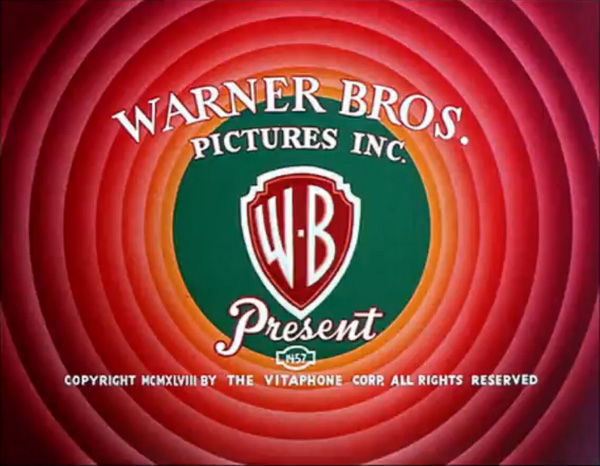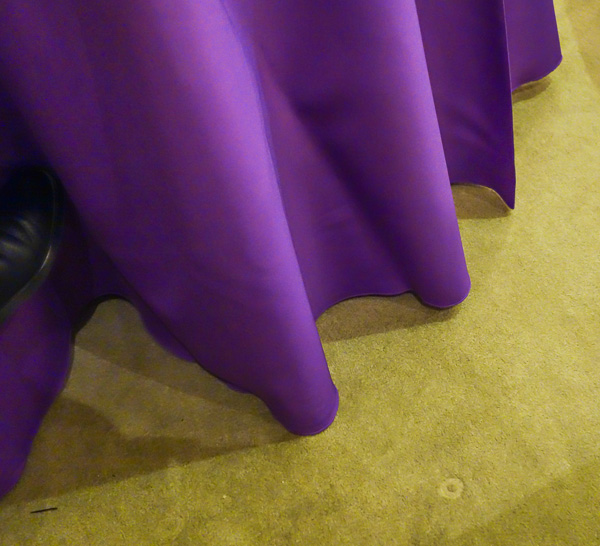As most of you probably know, filmmakers use the term “MacGuffin” to stand for some object that various characters in the tale are competing for. A secret paper, a formula, a stunning gem, a statue of a Maltese falcon…
In Fantasy and SF novels we have a slightly different convention—a special device or procedure or organism with special powers that affect the flow of the story. The writer very often works backwards, that is, they get some visually or conceptually interesting thing happening in their story, and only then posits a gimmick that will make the effects possible.
There must be some standard generic name for these gimmicks, and if so, I’ve probably heard it, but for whatever reason, I can’t think of a completely apt and standard phrase today. Deus ex machina isn’t quite right, as that’s more specifically a miraculous something that saves your characters. Pixie dust is fairly accurate, but it doesn’t have the technological feel that I’d like. I’ve seen handwavium too, and that’s not bad, but I guess I’d like a new phrase for this.

Let’s call what I’m talking about a bogosity generator. Kind of like a tank of helium, useful for inflating your pretty balloon animals so they can bobble across the ceiling. Or, more obviously, like an electrical generator that sets the great streams of sparks to arcing across your mad-scientist lab.
The rules are that fantasy authors aren’t expected to justify or to explain their bogosity generators, but an SF writer is expected to cobble together some kind of semi-plausible, paralogical, science-like explanation—that’s considered part of the fun of SF. The styles of these hand-waving explanations change with the intellectual fashions of the times. Over the years, preferred bogosity-generator-justifiers have included radio waves, radioactivity, the subdimensions, relativity, psi powers, black holes, quantum mechanics, parallel worlds, nanotechnology, chaos theory, superintelligent AI, an escalating technological singularity, bioengineering, and our dear friend the Higgs particle.
One point that’s worth making over and over is that an SF writer’s explanations for his or her bogosity generators serve a creative purpose. The theory behind your bogosity generator is not idle bullsh*t. Why? Because in the process of making up the explanation, you get ideas for new things to do with the bogosity generator.

When you’re thinking about the explanation, it’s like you’re reading an instruction manual for some cool new device. Admittedly, you yourself are writing the instruction manual at the same time that you’re reading it, but the manual is not a complete fabrication—it’s constrained by having to be logical, concise, intellectually appealing, internally consistent and, to a certain degree, externally consistent with some cherry-picked facts of science.
When you get a really fine explanation for your bogosity generator, it’s no longer the case that your story tells a lie . If the explanation is really cooking, the lie tells your story. Yeah, baby. That’s where you want to be. It’s a variation on a carnie grifter saying: “Don’t run the con. Let the con run you.”
It sometimes happens that an author invents the bogosity generator before deciding what it’s supposed to do. You might dream one up early in a novel simply because you know you’ll be needing some explanatory device sooner or later, even if you haven’t quite yet decided what kind of weirdness you’ll be needing to explain. Or you’ll have a nice mental image for a funky bogosity generator, and you go ahead and describe it without even knowing what it does or how it “works.”

This is the situation that I’m in with my novel-in-progress The Big Aha . About a quarter of the way into the novel, I introduced a bogosity generator called an oddball. It has some of the qualities of a MacGuffin, in that some of characters immediately set to work stealing the oddball from each other like the spies vying for that Maltese falcon. But it’s also meant to be a bogosity generator. I’m expecting great things from my oddball. Only I still have to figure out what those things will be—and what’s the “explanation” for the oddball. And I’m glad I still have to figure these things out, as I need material for the second half of the novel!
Here’s some text from the draft scene, where the oddball is introduced. I might mention that by a “nurb,” I mean a biotweaked plant or animal. In the future era where The Big Aha is set, somewhere near the end of the 21st century, tailored organisms have almost entirely replaced machines. “Teep” is telepathy. “Qwet” means “quantum wetware,” which is a bogosity generator of its own, it provides people with teep and with an ability to get their heads into a high “cosmic” state.

A scratched, glassy object sat upon a carved wooden shelf. It was a sphere the size of a robin’s egg, transparent on the outside, with an opaque core. This central core was dark purple. I’d often studied the object, trying to decipher its origins and its purpose, wondering over the sparks of reflected light that danced within. The deeply maroon central core was a spiky compound assemblage, a stilled explosion that resembled a sea urchin.
The really odd thing about this particular curio was that its appearance continually changed. The calligraphic scratches on its surface tended to wriggle and drift; the central core wobbled and varied in size. Once in a great while, if I’d fiddled with the curio enough, I’d see a stumpy cylinder grow out of the central core and out through the curio’s transparent side. This cylinder was like a smooth, leathery tube, but its outer end gave the appearance of having been roughly severed.
My wife Jane called this little sphere her amazing oddball. She’d picked it up in Manhattan, on the East Village beach that bordered the now-submerged Alphabet City district. Jane liked to claim that the oddball had called her by whispering her name. We’d never quite decided what it actually was. At first we’d taken it for a plastic amulet with an embedded holographic display—but then we’d decided it was biological, probably a nurb. Not that it resembled any nurb that had ever gone into production. Nor did it have any obvious commercial purpose. An abandoned experiment? A wild nurb that had emerged on its own?
I centered myself and took the oddball in my hand. It nestled against my palm, and I seemed to feel a faint glow of teep from it. Not something I’d ever noticed before. Was the curio somehow synching with my qwet mind?

Two months ago, I formed the desperate plan of having my oddball be someone’s severed third eye, to be used in concert with hopping from our world up to a parallel world called fairyland. I described this far-fetched idea in my December 10, 2012 blog post, “Cosmic Fairyland 2: Third Eye”.
That was a useful idea in that it helped me to continue writing. But the whole fairyland and third eye thing is too baroque to maintain. It introduced too many extra story elements into my novel. So I’m downgrading the oddball’s abilities. My character Loulou didn’t actually use the oddball to travel through another dimension to a parallel world and then hurl small green pigs, known as “gubs,” into our world for the other characters to see. (Gubs are described in my post of November, 30, 2012, “Gubs and Raths”.)
Instead, I’m now only requiring that the oddball has the effect of allowing Loulou to (a) make herself invisible without in fact leaving our world, (b) to project images and seemingly solid objects into reality, somewhat in the style of what spiritualists call a “physical medium.”

Fairyland was only Loulou’s hallucination, but the oddball allowed Loulou to become invisible, those around her thought she might be off in fairyland, and her ability to reify her imagined gubs made it seem like she might be off in fairyland tossing gubs into our world.
So now I’m trying to get more specific about what the oddball does, and how it works. I’m thinking I’ll say that contact with the oddball allows telepaths to begin converting normal matter into something I call wacky matter. Of course, wacky matter is merely a subsidiary bogosity generator. But it’s getting closer to something useable. I was already thinking about wacky matter a year ago, see my Jan 16, 2012, blog post, “Future Ads. Fun with Wacky Matter.”
So, repeating what I just said, I’ll assume that people who have access to the oddball can turn objects into wacky matter that they control. And later on, people who merely have an understanding of the powers involved in the oddball can create and control wacky matter too.

Let’s back up and describe wacky matter again. Wacky matter is like psychic Silly Putty. It takes on shapes and patterns to match any outré mind state. Peoples’ houses might change into big shoes or have rooms with ceilings one inch tall, or maybe look like Dogpatch scenes from Al Capp’s Li’l Abner. You might dose your surroundings to make them more vibrant, more cartoony, more congenial. Instead of you getting high, your house gets high! Don’t run your con, let your con run you.
Why do I want wacky matter? The Big Aha is about a future psychedelic revolution that arrives in scientific form. It will be kind of perfect if my qwet, qrude, loofy characters can taint the physical world with wacky matter—thanks to their quantum wetware and their oddball energy. Did Kesey and Leary change the world around them? For awhile. And then the world pushed back. We got hit with Charlie Manson and with disco. Wacky matter became a destructive and repressive force.
Over the past year, I’d forgotten all about wacky matter. But recently I stumbled across the contemporary real-tech notion of “metamaterials”—which reminded me of my fictional concept. Metamaterials are engineered to contain regular lattices of atoms that subject light rays and other electromagnetic fields to transformation optics—a bit like a lens does. Supposedly a metamaterial can become invisible via a so-called electromagnetic cloak or “metamaterial cloaking.” As the Wikipedia article puts it, “The guiding vision for the metamaterial cloak is a device that directs the flow of light smoothly around an object, like water flowing past a rock in a stream, without reflection, rendering the object invisible.”

I don’t want to use the word “metamaterials” more than once in The Big Aha, and then simply as a background justification for wacky matter. The thing is, I can barely understand the Wikipedia explanations of metamaterials, and the factuality of the concept limits me, and I don’t want to be playing catch-up-ball. Better to take a little inspiration from the science, but then be working with a completely bogus concept that I’ve invented, and which will obligingly have any properties that I require. Writing my own instruction book for my bogosity generator. Wacky matter, not metamaterials.
I can straight-up use the metamaterial cloaking routine for oddball/wacky-matter invisibility. And projecting images and objects into wacky matter can be explained with a rap about atoms being quantum computers, and the telepaths’ quantum wetware minds getting entangled with the “minds” of the atoms. You can make insubstantial illusions simply by selectively tweaking the refractive index of the air. And for objects, you go ahead and do a transmutation of matter routine.
But I still need to involve the oddball. How is it letting people make wacky matter? Maybe the oddball is helping with the entanglement part.
And, the payoff part, what can the oddball and the wacky matter do? What’s in the back pages of the instruction manual?

I imagine exploding an object into atoms, but have the atoms remember where they came from so you can play the explosion backwards. Like the atoms were connected to their original locations by rubber-band spacetime threads.
I want my qwet-heads to reach the Big Aha, which might be the light visible between our thoughts, the white light of the Void.
Naturally the oddball and wacky matter will pose a threat to the continued existence of the world. The world is a consensus illusion, and the oddball might nudge everyone/everything out of this illusion. We might lose our balance like a tightrope-walker looking down past the rope to the yawning chasm below.
The oddball will want to reproduce. In its initial state, it was blocked from so doing. Unwittingly my artist character Zad helps it begin to spread. He incorporates the oddball into one of his new sculptural artworks, hoping to enhance his work for a big come-back show at the Idi Did gallery. But then the work eats the gallery—and most of downtown Louisville, Kentucky.
Also I need to limn the origin of the oddball. Possibly a wetware hacker made the oddball, partly by accident. Perhaps it evolved—but could the evolution have been directed by…the Big Aha?

[A visit from the Golden Age computer theorist, Ted Nelson.]
One scene I want to do, it’s the ultimate “spaced friend” scene. My character Junko appears one morning and, thanks to the oddball and wacky matter, she’s altered the dimension signature of the spacetime in her body. Her body has, like, two-dimensional time and two-dimensional space. She slides into the commune’s morning breakfast room, sliding across the floor.
“Rough night, Junko?”
Don’t write the bogosity generator, let the bogosity generator write you.









February 5th, 2013 at 11:52 am
I’ve also heard the word “phlebotinum” used to refer to the same concept (on TV Tropes, for instance). That term was apparently invented by the writers of Buffy the Vampire Slayer.
February 5th, 2013 at 3:24 pm
To use the term “bogosity” you really should credit “Click and Clack”.
Thanks
Bill
February 5th, 2013 at 5:02 pm
Bill, I’m a big fan of “Click and Clack,” but I don’t think they originated the term “bogosity.” I feel like I first heard the word being used by countercultural types in the Bay Area in the late 80s or the early 90s.
Taymon, hadn’t heard “phlebotinum.” I think the movie Avatar has “unobtanium,” which may have been used by other before. The plot of the lovely old Robert Lawson illustrated book, “McWhinney’s Jaunt” hinges on a tank of mysterious “Z-gas,” which is a really nice example of a bogosity generator.
February 5th, 2013 at 5:21 pm
Rudy,
I have thoroughly enjoyed much of your work, but I have been like you used to be: distant from the internet and the blogging community. I just recently started readng your blog and was unaware of your newest project. I am an aspiring writer, mystic and philosophy graduate school drop out who happened to be working on a book concept in line with The Big Aha. So, I thought you might be interested in checking out a small sample of what I’ve got so far. I definitely have used a very common Macguffin. Here it is:
The pitter-patter of spherical condensation on the linoleum floor of the shower in the rank mildew infested bathroom of a second-story apartment resembled an oddly syncopated marching band (who, as it happens, have—inadvertently and unwittingly—a special ‘knack’ for algorithmic patterns: class four gnarly computations) spectacularly incorporating a multitude of variant time-signatures far more obscurantist than any 4/4 verse-chorus-verse (with the occasional bridge) commercial aesthetic. This symphony of water droplets had put Sophia into a trance-like state, which subsequently transformed into a euphoric-somatic full-body immersion: a total presence eluding all conventional explanations; an ultra-enlightened state of being.
“How did I get here?” Sophia muttered to herself in a tone comparable to that of a person suffering from a comatose induced amnesia—she had finally woken up. And before she could answer her own question, she heard a bell ringing: “The phone?” She seemed to not even know what the phrase meant as she said it. “I guess I should get it.”
She leaned over and turned the knob on the faucet. The masterful aquatic symphony sputtered to a halt with a brief but suiting grand finale. She wrapped a towel around her frail-looking body and proceeded to the kitchen where the phone was perched on a bare wall…
February 5th, 2013 at 5:56 pm
Thanks, Zen-Tao Gnosis, a nice start. The chaotic water puddle, yes! I cut your post short, as it seemed too long for a comment, but I’m sure the readers can get a good idea from what you have here.
February 5th, 2013 at 6:16 pm
The oddball *is* the wacky matter instruction manual that transfers via teep
February 5th, 2013 at 6:28 pm
Ok thanks, I’m glad you like it. I’m looking forward to being able to experience your Big Aha.
February 5th, 2013 at 6:29 pm
“Bogosity” is apparently at least as old as 1981 when “The Jargon File” at MIT defined it as of Carnegie Mellon University origins. Lengthy discussion on its etymology appears at http://itre.cis.upenn.edu/~myl/languagelog/archives/003515.html
Very interesting to read how you are using it in the writing process. Thanks.
February 6th, 2013 at 9:49 pm
Google NGrams turns up the word ‘bogosity’ in 1907.
(New Irish Review 1907, Unidenominationalism and Bogosity, Arthur Synan.)
February 18th, 2013 at 3:08 am
Hi Rudy, As usual, I can always find beautiful photography on your blog. Thank you so much for sharing!
March 29th, 2013 at 6:18 pm
Hi Rudy, et al-
I think I encountered bogosity circa 1983 from a data processing co-worker, in reference to some weak program code he inherited. Larry said it was full of bogons, the quanta of bogosity. He also referred to it as tsuris (Hebrew. n.: trouble or aggravation) code instead of source code. I guess bogosity was already floating around tech circles, itinerant and unmoored.